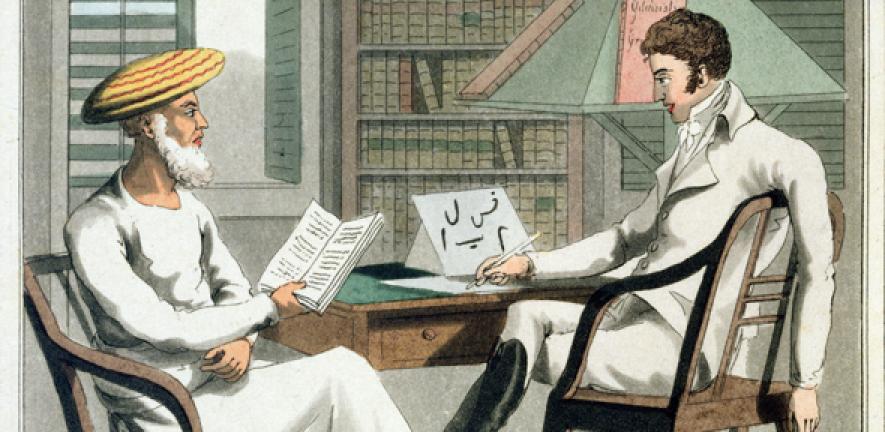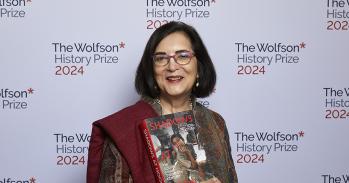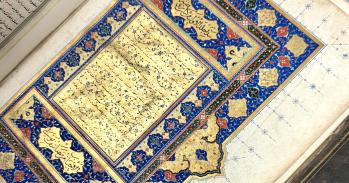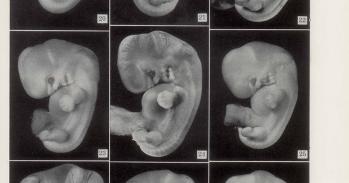
The history of science has been centred for too long on the West, say Simon Schaffer and Sujit Sivasundaram. It’s time to think global.
The history of science has been centred for too long on the West, say Simon Schaffer and Sujit Sivasundaram. It’s time to think global.
The ‘go-betweens’ have been the cogs that have kept science moving ... their tradecraft has been indispensable to the globalisation of science
Simon Schaffer
The year was 1789; the place Bengal. Isaac Newton’s masterpiece Principia Mathematica was being translated for only the third time in its already 100-year-old history; this time, into Arabic.
The author of this remarkable feat of scholarship was Tafazzul Husain Khan. According to a member of the ruling East India Company: “Khan… by translating the works of the immortal Newton, has conducted those imbued with Arabick literature to the fountain of all physical and astronomical knowledge.”
For Professor Simon Schaffer, who has researched the story of Tafazzul’s achievements, the complex work of translation is deeply significant. Tafazzul worked with scholars in English, Persian, Arabic and Sanskrit language communities in his efforts to connect Newtonian theories with the Indo-Persian intellectual tradition. For Tafazzul was, as Schaffer describes, “a go-between”.
“The ‘go-betweens’ are the individuals who, across the centuries, have been the cogs that have kept science moving,” he explains. “They are the knowledge brokers and translators, networkers and messengers – the original ‘knowledge transfer facilitators’. Their role may have disappeared from mainstream histories of science, but their tradecraft has been indispensable to the globalisation of science.”
Schaffer and Dr Sujit Sivasundaram are historians of science with an interest in understanding how the seeds of scientific knowledge have spread and grown. They believe that the global history of science is really the history of shifts and reinventions of a variety of ways of doing science across the world.
They, and others, have called for a retelling of science’s past, not only to be more “culturally symmetric” but also because the issue has enormous contemporary relevance.
“A standard tale is that modern science spread around the world from Western Europe, starting about 500 years ago based on the work of those such as Newton, Copernicus and Galileo, and then Darwin, Einstein, and so on,” explains Schaffer. “But this narrative about the globalisation of science just doesn’t work at all. It ignores a remarkable process of knowledge exchange that happened between the East and West for centuries.”
“Successful science is seen to be universal in its applicability,” adds Sivasundaram. “Yet, accounts of scientific discovery, heroism and priority have been part and parcel of a political narrative of competitive ownership by empires, nations and civilisations. To tease this story apart, we focus on the exchanges and ‘silencings’ across political configurations that are central to the rise of science on the global stage.”
Over the past two years, with funding from the Arts and Humanities Research Council, he and Schaffer have undertaken a programme of debates to ask whether a transregional rather than a Eurocentric history of science could now be told.
To do so, they teamed up with researchers in India and Africa, including Professor Irfan Habib from Delhi’s National University of Educational Planning and Administration and Professor Dhruv Raina of Jawarhalal Nehru University, and in December 2014 held an international workshop at the Nehru Memorial Library in New Delhi. “And now our debate is also being carried forward by a new generation of early-career researchers who came to the workshop,” adds Sivasundaram.
One conundrum the researchers debated was how global narratives of science could have been missed by scholars for so long. It largely stems from the use of source materials says Schaffer: “It’s an archival problem: as far as the production and preservation of sources is concerned, those connected with Europe far outweigh those from other parts of the world.”
“If we are to de-centre from Europe, we need to use radically new kinds of sources – monuments, sailing charts, courtly narratives, and so on,” explains Sivasundaram. He gives an example of Sri Lankan palm-leaf manuscripts: “The Mahavamsais a Buddhist chronicle of the history of Sri Lanka spanning 25 centuries. Among the deeds of the last kings of Kandy, I noticed seemingly inconsequential references to temple gardens. This led me back to the colonial archive documenting the creation of a botanic garden in 1821, and I realised that the British had ‘recycled’ a Kandyan tradition of gardening, by building their colonial garden on the site of a temple garden.”
Moreover, says Sivasundaram, the mechanisms of knowledge assimilation are often overlooked. Europeans often accumulated knowledge in India by engaging with pandits, or learned men. “The Europeans did not have a monopoly over the combination of science and empire – the pioneering work of Chris Bayly [see panel] shows how they fought to take over information networks and scientific patronage systems that were already in place. For Europeans to practice astronomy in India, for instance, it meant translating Sanskrit texts and engaging with pandits.”
“Very often, scientific achievement is used as a standard to measure a country’s progress because science and technology can intervene in problems of hunger, disease and development,” adds Sivasundaram. “If a biased history of science is told, then the past can become what Irfan Habib has called a ‘battlefield’, instead of a ‘springboard’ for future research or indeed for conversation across cultures.”
This is why, says Schaffer, it becomes so important to provide a better account of the worldly interaction between the kinds of knowledge communicated, the agents of communication – like Tafazzul Husain Khan – and the paths they travelled.
The art of listening in
Knowledge networks were as important to the building of British political intelligence in north India in the 18th and 19th centuries as they were to the diffusion of science.
No discussion of Indian history, or of the communication and the movement of knowledge, would be complete without reference to the work of the late Professor Sir Christopher Bayly (1945–2015).
Bayly saw the role of Indian spies, runners and knowledgeable secretaries as crucial to the British in helping to keep information and gossip flowing in the 1780s and 1860s. His ground-breaking research uncovered the social and intellectual origins of these informants, and showed how networks of ‘go-betweens’ helped the British understand India’s politics, economic activities and culture.
“One overriding reason why the East India Company was able to conquer India… was that the British had learnt the art of listening in on the internal communications of Indian polity and society,” he explained in his seminal work Empire and Information (1996).
Ultimately, however, India’s complex systems of debate and communication challenged the political and intellectual dominance of the British; it was their misunderstanding of the subtleties of Indian politics and values, he argues, that contributed to the British failure to anticipate the 1857 Mutiny–Rebellion.
World-renowned for his enormous contributions to his subject, Bayly was the Director of Cambridge’s Centre of South Asian Studies until his retirement in 2014, as well as President of St Catharine’s College, and the Vere Harmsworth Professor of Imperial and Naval History in the Faculty of History.
He completely transformed people’s understanding of India in the 18th and 19th centuries, explains Professor Joya Chatterji, the Centre’s current Director: “Chris has been one of the most influential figures in the field of modern Indian history. Every one of his monographs broke new ground, whether in political, social and economic, or latterly intellectual history.”
His work was increasingly drawn towards ‘world historical’ comparisons and connections; his The Birth of the Modern World (2004) transformed the understanding of the history of modernity itself, drawing attention to its richly complex, overlapping global roots.

The text in this work is licensed under a Creative Commons Attribution 4.0 International License. For image use please see separate credits above.




